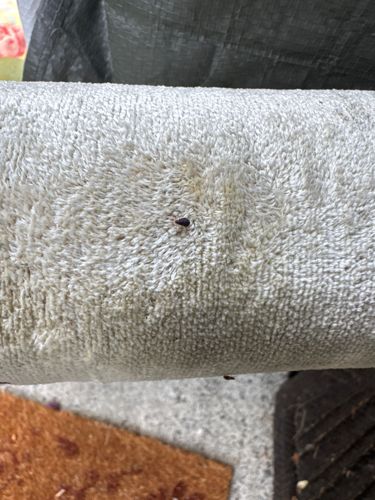Flea
Scientific Name: Various species, commonly Ctenocephalides felis (cat flea, most common domestic species) or Pulex irritans (human flea), among others.
Order & Family: Siphonaptera (order), Pulicidae (family and most common family for domestic pests)
Size: 1.5 to 3.3 millimeters (0.06 to 0.13 inches) in length

Natural Habitat
Fleas are found virtually wherever warm-blooded animals are present, including homes (carpets, bedding, pet resting areas), yards, and wild animal nests. They thrive in environments with high humidity and moderate temperatures.
Diet & Feeding
Adult fleas are obligate hematophagous parasites, meaning they feed exclusively on the blood of their hosts (mammals and birds). Larvae feed on organic debris, including adult flea feces (which contain dried blood).
Behavior Patterns
Fleas are wingless insects that are excellent jumpers, able to leap great distances vertically and horizontally. They move quickly through fur or hair. They typically complete their life cycle (egg, larva, pupa, adult) on a host or in the host's environment, preferring warm and humid conditions. Adults must feed on blood to reproduce.
Risks & Benefits
Potential risks: Fleas are significant pests due to their bites causing itching, skin irritation, and allergic reactions (flea allergy dermatitis) in both humans and animals. They can transmit diseases such as plague (Yersinia pestis), murine typhus (Rickettsia typhi), and serve as intermediate hosts for parasites like the dog tapeworm (Dipylidium caninum). Benefits: In some ecological contexts, fleas play a role in regulating host populations, though this is overshadowed by their pest status.
Identified on: 8/31/2025